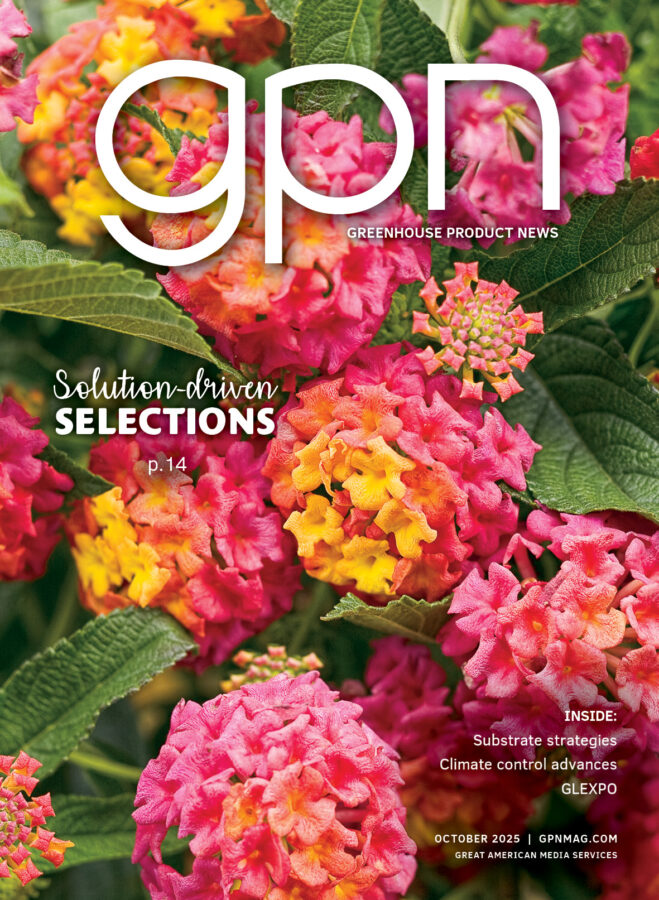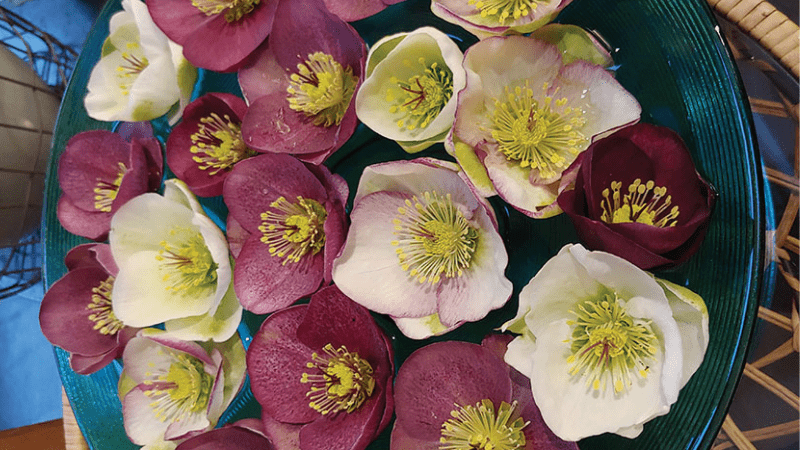
Culture Report: Hellebore Frostkiss and Winter Angels series
One of the first plants I noticed in the trials area when I started working at Pacific Plug & Liner more than 10 years ago was a hellebore. Being from Texas, I had no clue what this strange thing was. Over the years, I have learned a lot about hellebore — in particular, the Frostkiss and Winter Angels series, which are hybrid varieties bred from nine species. These hellebore are known for their marbled foliage with an array of colored flowers and typically bloom later than traditional hellebores on the market.
The hellebore is still a strange plant to many; when I mention the word “hellebore,” I see fear in people’s eyes because many have had no experience with growing this plant. I hope to put an end to that fear with some education on hellebore culture.
In the fall of 2022, I had the pleasure of traveling with Frostkiss and Winter Angels breeder Bart Noordhuis. We took a hellebore road trip and visited more than a dozen hellebore Frostkiss growers in the west. Two states and two countries in one week, it was the hellebore version of “Planes, Trains and Automobiles.” Hellebores, or Lenten roses, are actually very tough plants and easy to grow. I learned from the trip that growing hellebores is just a bit different from traditional perennials; follow the simple tips in this article and you will do fine.
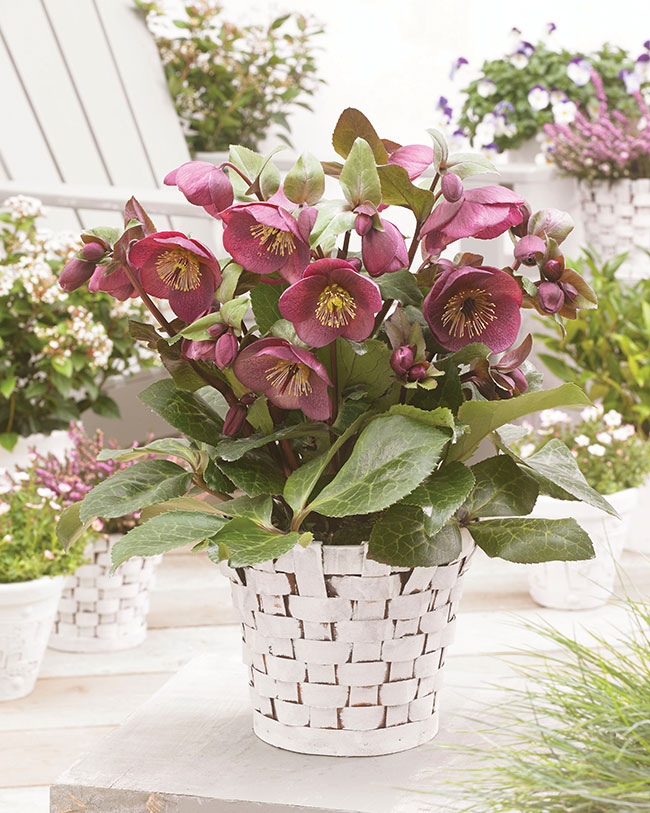
CROP LOCATION
Placement of the crop is equally as important as choosing soil, fertilizer, planting time, etc. On our road trip, we saw a few places where low spots in a field greatly reduced the quality of the hellebore crop. The root zone of the crop was saturated in those areas, so the lesson here is to always make sure the crop is placed in an area that is level and drains very well. Also, find a location that can offer both overwintering protection in the winter and shade protection in the summer, i.e., under some type of structure versus an open field, such as a hoop house.

SOIL
On our trip we saw a widerange of soils; high-quality soil with good air pockets made a huge difference in the quality of the crop. Roots need air. A soggy, dense soil will suffocate a hellebore. For best results, use a well-drained soil made with mostly white peat, Canadian or Baltic, and not more than 20% quality black peat. Black peat will shrink throughout the growing cycle, causing poor drainage. Contrary to many crops, hellebores need a lower soil pH around 5.4 to 5.5; if the pH goes above 6, it makes uptake of phosphorus difficult and less flowers will develop.
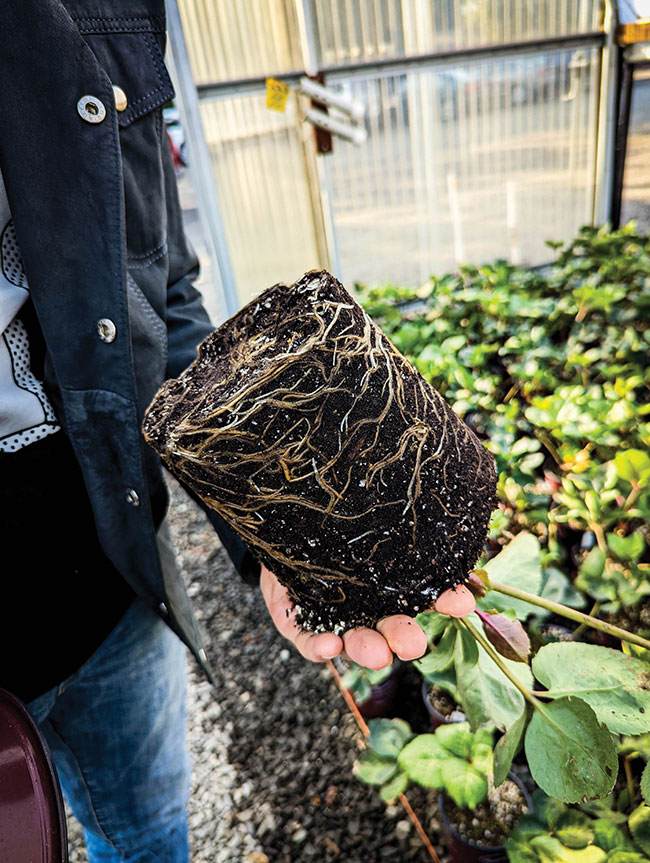
PLANTING
Starting out on the right foot is important. Whether crops are spring or fall planted, it is advisable to pot as early as possible in the season to get the growth needed to fill the pot. This is particularly true in the spring as hellebore grow more quickly when the temperatures are cooler, so a delay in planting can stunt the overall finish size of the crop and decrease the flower bud count. For growers not wanting such a long crop time or for growers wanting to avoid over-summering a hellebore, fall planting is highly recommended, as it can cut the crop time in half. The following chart gives recommended planting dates and corresponding crop times.
It is important to fill pots to the top with soil; this will help prevent warm roots. Leaving a gap between the top of the pot and the soil level will cause pots to heat up more than if the pot is full, potentially burning the hellebore roots. When planting liners, plant a little deeper than the surface of the soil. This will help to increase flower bud development. A top dressing can be used to prevent weeds as hellebore is a long crop. On our travels, we saw hazelnut shells used in a few locations; this was a great top dress using a local resource. In other areas of the country, rice hulls are often used.
SPACING
Frostkiss and Winter Angel are bred with efficiency in mind, so most of the crop life they can and should be kept pot tight, setting in a triangular pattern works best to eliminate any space where sun can hit the pot. These varieties do not have a heavy rosette habit, but grow upright; therefore, they need less space and will not stretch when grown pot tight. Hellebores enjoy cool roots, so keeping plants close together causes the foliage to shade the pot and prevent root burn. Cool roots mean the plants can grow much bigger and create more flowers by time of sale. Once plants start to flower in the spring they can be spaced to give flowers room to develop, just keep them close enough so pots are still shaded by the foliage.
FERTILIZATION & IRRIGATION
The most important thing with hellebore is to keep them growing during the year. Never stop fertilizing for any reason. Hellebore need a steady feed throughout the growing cycle with an EC of 1.2 to 1.5, measured directly in the soil. A slow release 8- to 9-month fertilizer is recommended when spring planted.
In the fall, the shortening of days and cooling of temperature signal hellebore to initiate flowers so they need extra nitrogen (N) and iron (Fe) during this time. This can be supplied using a liquid drench, keeping EC levels at 1.2 to 1.5.
Phosphorus is very important to hellebore. This was one of the most mentioned topics on our trip. The best ratio between phosphorus (P) and potassium (K) is 1:3. Aim at 150 ppm P and 450 ppm K; this is different from many other plants. Reaching this ratio requires a liquid feeding on top of the base slow release fertilizer (which is mostly P:K 1:3 or 1:4) of 20-20-20 or 27-15-12 with microelements. We also discovered many growers do not often test their soil, which means they are driving blind. Perform soil tests throughout the life of the crop to ensure the crop P:K levels stay in check. In general, growers struggle with too high of potassium in hellebore crops, which causes the crop to stall and form less flowers.
The method of watering is very important for hellebores to avoid stress. Drip irrigation works best, but overhead irrigation with feed is also possible. With overhead irrigation, try to avoid watering during the hottest hours of the day because the leaf temperature is high and the water temperature much cooler. Leaf temperatures can go up to 105° F, while in most cases the water temperature is around 75° F. This difference creates a temperature shock and causes stress. Stress will weaken plants and make them vulnerable to root problems such as Pythium, Rhizoctonia and Phytophthora. When watering using overhead irrigation on warm days, irrigate only in the early morning or late evening.
EXPOSURE
Helleborus like cool roots at all times and grow best with sun protection. It is very important to prevent the sun from shining directly on the pots at any time. Therefore, leave as little space between pots as possible and make sure the leaves cover the pots, creating shade on the pot. In the summer months, when temperatures are warmer, take further precaution by using 30 to 35% shade cloth. If overwintering under plastic, be sure to use a white poly versus a clear poly. This will help keep plants from burning on sunny days.
TEMPERATURE
In the fall, the perfect temperature for growing hellebores is between 40 to 50° F; this range triggers the flowers to initiate. Depending on the climate this will occur between September and December. In winter, keep the Helleborus inside a frost-free structure with temperatures ranging between 32 to 40° F. When there is no frost, the plants will flower by their natural genetics; if there is frost, it will postpone the flowering time. In the summer months, it is important to shade at 30 to 35% when temperatures rise above 80° F.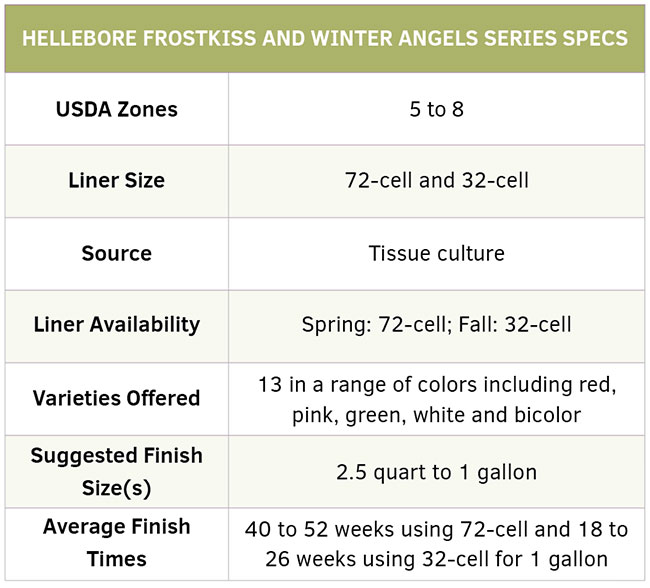
INSECTS & DISEASES
Hellebores are tough plants and rarely get diseases. The main disease issue seen is Botrytis in the flowers and it can also show up in the stems close to the soil line. Prevent this by keeping plants dry and in an area with good airflow. Watch for aphids as they transmit virus, also spider mites can be an issue in drier climates. In wet conditions, snails can be problematic. Discourage snail infestations by keeping the crop drier and choose a well-drained location to set the crop down on.
WHAT SHOULD YOU NEVER DO TO A HELLEBORE?
Put the clipper down. Hellebores should never be pinched; as Bart would say, the leaves are the lungs of a hellebore. Every leaf on a hellebore helps to form flower buds, so removing leaves will decrease flower count and overall finished quality. I know the urge to pinch the damaged leaves is high, but let those leaves continue to bring energy the hellebore needs to form flower buds. Once the plants are ready to ship and flowers are budded, a few damaged leaves can be removed.
Never apply a growth regulator as hellebores are slow growing. PGRs can slow a hellebore down for months and can delay or even stop flowering altogether.
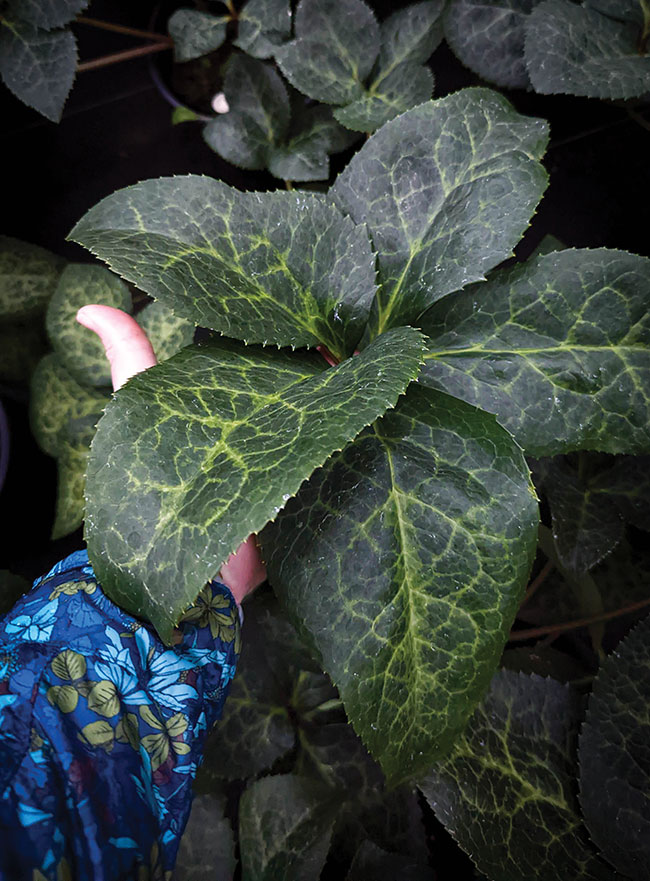
Every situation can be different with so many climates, different growing operations and other variables here in the U.S. We are here to help customize a hellebore program for your operation. Please do not hesitate to contact us at PP&L with any questions; we can put you in touch with Bart or even set up a visit to see your crop so we can help you grow the best hellebore Frostkiss and Winter Angels crop possible.
For an enhanced reading experience, view this article in our digital edition by clicking here.








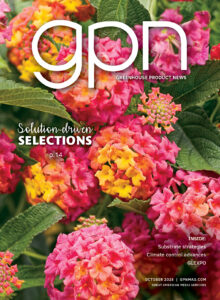
 Video Library
Video Library 

















